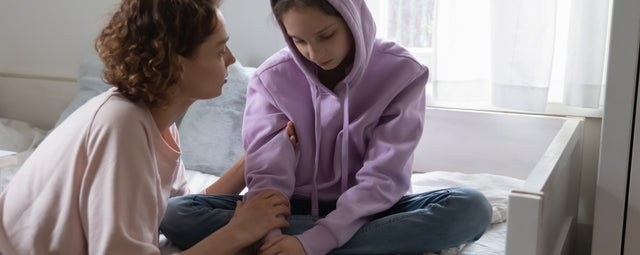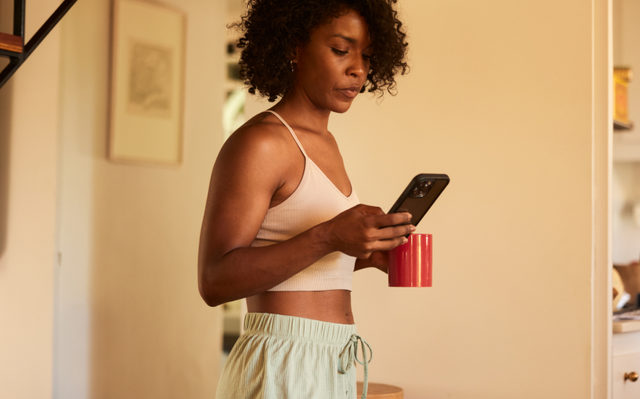Recently, Olympic Swimmer Emily Seebohm spoke about winning the Olympic Gold in the face of endometriosis.
This disease impacts women in the prime of their lives, and comes to them through no personal failings or lifestyle choices but it impacts every aspect of their lives. For some, the pain can be so extreme that it impacts the ability to maintain a career or personal relationships, as sex can be quite painful. Women living with endometriosis often find that their social lives are impacted, the thought of leaving the house or undertaking tiring activities is extremely challenging, and some women often suffer from depression as a result of their endometriosis. The prospect of starting a family can also be more challenging but only 30% of women with endometriosis have associated infertility, so it is still possible to have children.
Painful cramps, mood swings and other negative symptoms are all commonly associated with menstruation - but how do we know when this is abnormal? Around 334 million women in the world menstruate, but did you know that 1 in 10 of them suffer from endometriosis? Other symptoms include chronic fatigue, abdominal bloating, bowel and bladder issues such as constipation or incontinence and excruciating pain.
About a third of women with the condition actually don’t discover they have it until they have difficulties falling pregnant, or it is discovered during an operation for something else.
Endometriosis is a condition where tissue similar to the lining of the endometrium (which normally lines the uterus) is actually found in abnormal sites around the body, most often the pelvis which causes a number of issues such as pelvic pain and possible infertility. In a normal menstrual cycle, the shedding from the walls of the uterus is able to exit through the vagina, but with endometriosis, this tissue has no way of escaping the body.
This condition can be diagnosed in a number of ways
- If there is associated ovarian cysts, endometriosis will show up on an ultrasound scan, or alternatively, your gynaecologist can perform a pelvic exam and feel for any abnormalities
- Laparoscopy - Keyhole surgery where a small tube is inserted into the abdomen through a small cut in the belly button to see if there is any endometrial tissue in the pelvis. This is the most common and effective way of diagnosing endometriosis.
There isn’t one commonly known cause for this condition, and it is quite individually varied, however, a number of factors have been thought to possibly contribute. Things such as family history, having your first period before 11 years of age, backward menstruation where the blood flow travels backward along the fallopian tube and toward the pelvis, and metaplasia which is the conversion of normal pelvic tissue into endometriosis.
We spoke with Natalie Archer, an Australian model who has recently completed her honours research on the benefits of Omega 3 Fatty Acids on inflammation and the brain, and hopes this anti-inflammatory may decrease chronic pain conditions such as endometriosis. Natalie has also lived with endometriosis for over a decade and is dedicated to fighting for education and increasing awareness of this condition. She has created a safe online space where women can connect to receive support and information on endometriosis. Read our chat with her below!
What is your story – when were you first diagnosed and how did this affect you?
I began my endometriosis journey at the onset of my first period. I recall that the pain was so bad, it actually felt more agonizing than the time I broke an arm in a skiing accident. I was told over and over again “period pain is normal.” So when doubled over in pain, to the point of blacking out, I never once complained.
I missed days of school every month. When explaining this to my doctor, he proceeded to prescribe one form of birth control after another. When the pain, bloating & stomach upsets began coming at other stages of the month I received every test in the book. Ultrasounds, MRI, Cat scan, blood work. You name it, I had it. Every time the response was the same – “Well the good news is nothing is wrong.” I became incredibly frustrated. After only a few hours of research, I became certain I had endometriosis. Everything lined up. After seeking the care of a specialist, my concerns were finally validated. He recommended surgery as soon as possible. Despite the fact that I never had an abnormal scan, surgery revealed deep infiltrating stage IV endometriosis & adenomyosis. Excision surgery was successful in removing the endo. However, I still suffer from the adenomyosis, an even lesser known related condition which causes chronic pelvic & lower back pain, gastrointestinal symptoms, nausea & fatigue. I now try to manage my symptoms with the help of a pelvic physiotherapist & a healthy lifestyle. I feel that if I had received early intervention, my body would have bounced back from the residual effects of the disease much faster and I would not be suffering nearly as much as I do now.
Through this process I became astounded by the lack of awareness in the medical community & the misinformation being relayed to patients every day. I set out to help women find appropriate treatment through my instagram account @living_with_endometriosis. However, the impact just wasn’t big enough. I want to educate the healthcare community, endometriosis sufferers & the general public that there is an effective way to treat endometriosis – excision surgery with an endometriosis specialist, early intervention can prevent the disease from progressing and more research is needed to better understand the causes, effects & treatments.
Bad cramps can be a sign of endometriosis, but some women might not think anything of this, how did you know that your symptoms were actually a sign of endometriosis and not a bad period?
If your period pain stops you from going to school, work or socialising - it is NOT normal.
What do you think one of the biggest misconceptions about endometriosis is?
That endometriosis is an incurable disease. Actually, if you see a true excision specialist, they are able to remove the disease very effectively. Many women go on to live pain-free lives. Unfortunately, only a handful of specialists are trained in excision.
Other misconceptions include - hysterectomy, pregnancy & birth control being a cure - NONE of these are a cure.
Have you developed any ways of managing the pain such as diet or lifestyle changes?
The best thing in managing the pain has been regularly seeing a pelvic physiotherapist - she helps reduce the pain and tension caused by chronic pain in that area. I also like gentle YIN yoga, as well as a diet low in refined sugar & carbohydrates, and high in nutritious foods like fruit and vegetables.
What does a typical day in your life look like?
I wake up at about 8am. I have my coffee and then take my medications. I have to wait a while before i eat, so my morning routine runs for about two hours with lots of rest in between tasks. I then start to do some work or take the subway if I have a doctors appointment. If i am having a bad pain day i succumb to ubering everywhere. When I get back I always need to rest for a while with my legs up on the bed or couch. I will do a bit more more and then In the afternoon I try to go for a walk or to a yoga class. In the evening I am usually too tired or in too much pain to cook, so my boy friend and I will order some takeway and then watch a movie snuggled up on the couch with our rabbit Merky.
What work are you currently doing with the endometriosis American foundation?
I am currently volunteering with the Endometriosis Foundation of America to educate high schoolers on endometriosis. I have also started my own charity called The Endometriosis Coalition - we are working towards educating health care professionals and the general public on endometriosis signs & symptoms so that women are validated and receive earlier treatment. Look out for our first initiative coming in march - a beautiful set of bracelets of which all proceeds will go towards raising awareness about this pervasive & debilitating condition. Keep track of our progress on instagram @theendo.co
And of course we need to know, are you a fan of Modibodi?
Yes, I have been using Modibodi. I find that it is much more comfortable towards the end of my period when it is a bit lighter. And provides reassurance when bleeding is unpredictable.
Modibodi is a great solution for one of the more inconvenient symptoms of endometriosis, irregular periods and incontinence. This can happen at anytime, anyday of the week and are often a major cause for concern, not to mention the unpredictability of flow level, sometimes resulting in a major leak in the middle of the day when you have no supplies! Modibodi works to remove this worry, and keep you protected all through the day, every day of the week. It looks and feels just like normal underwear, but is far from it, and it ensures you never have to go another day in fear of those unexpected leaks. Women living with endometriosis have enough on their minds and enough to worry about without including those pesky leaks, so Modibodi provides the perfect safeguard and piece of mind.
We thank Natalie so much for her time in chatting to us, and know she will continue to work towards a better future for women with Endometriosis.
You can shop Modibodi here
[embed_popupally_pro popup_id="11"]






